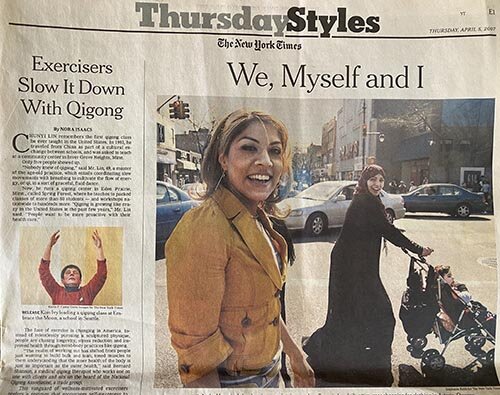One night in late February of 2007 I woke up in excruciating pain. I shot my left leg straight up from the covers; it was ramrod straight. I tried to bend it at my knee, but the pain and rigidity were so bad I could not. I rubbed at rubbed but nothing abated the searing sensations. I was so confused and someone terrified. I also had to use the bathroom. I rolled out of bed, used the walls for support and hobbled to the toilet. I sat down with my leg still rigid, returning to bed the same way. After about an hour the pain subsided, but I still could not bend my knee. It had blown up to the width of my thigh. In fact, there was no longer a distinction between my thigh and my knee.
Over the next few days various joints randomly blew up throughout my body like this. The pattern was always the same: excruciating pain, ramrod rigidity, blown up like a water balloon. Wrists, ankles and sometimes both knees at once would be attacked. For several days I could not bend either knee. I could not even walk, resorting to crab crawling backwards throughout the house to reach the kitchen, toilet or bed. My doctor had no idea what was going on. I writhed in pain after he tried to forcibly bend my knee. I fired him. Joyce Broderson’s husband was a teacher in the school of Medicine at the University of Washington and he sent me straight over to their Rheumatology department.
I was their lab rat. They also had no idea what was happening. (At least they didn’t force my knee!) I was tested for Rheumatoid Arthritis, Lupis, food allergies and other more obscure autoimmune conditions. Everything came back negative. They put me on prednisone and did more tests. This went on for well over a month. I couldn’t walk much less drive. I certainly couldn’t teach. Somehow my classes kept going with my senior students taking the reins. My number one at the time, Karin Collins, went out of her way to keep the Moon afloat.
I slept when I could, but the prednisone also had me ramped up. I could tell my immune system was crashing. I looked like hell. Puffy from the prednisone, ashen from the assault. Blue bags under my eyes from depression. I was fairly certain this was it for me, I’d have to find another career because I certainly couldn’t move. The Moon’s five-year lease was up in a year and I was convinced I’d need to let it all go, just went it was getting going. And then the phone rang. It was the New York Times.
To this day I have no idea how they got my name. Somebody knew somebody who knew somebody else who told Nora Isaacs, “There is this school in Seattle Washington, you should check them out for your article on Qigong.” Nora and I hit it off and chatted for about an hour about Qigong. I’ll never forget sitting on a chair with my ramrod leg stuck up on the kitchen table while I talked about the health benefits of Qigong.
The photography team from the NY Times was scheduled to be in my dojo a few days later. I had no idea how I was going to pull it off in the state I was in. Talking on the phone about Qigong is one thing, not being able to move while the photographers from the one of the most famous newspapers in the word shot pictures of Qigong was quite another. Even so I decided the Luohan was the form to present, given its dynamic beauty, profound history and strong floor charisma. Dozens of Luohan students answered my call for help. They rocked the floor as the photographers snapped on. Robert Meserve, to this day one of most beautiful Luohan students I’ve even had the pleasure to teach, held the floor with his strong presence while everyone breathed in and breathed out in unison.
Two weeks later the article hit the stands.


